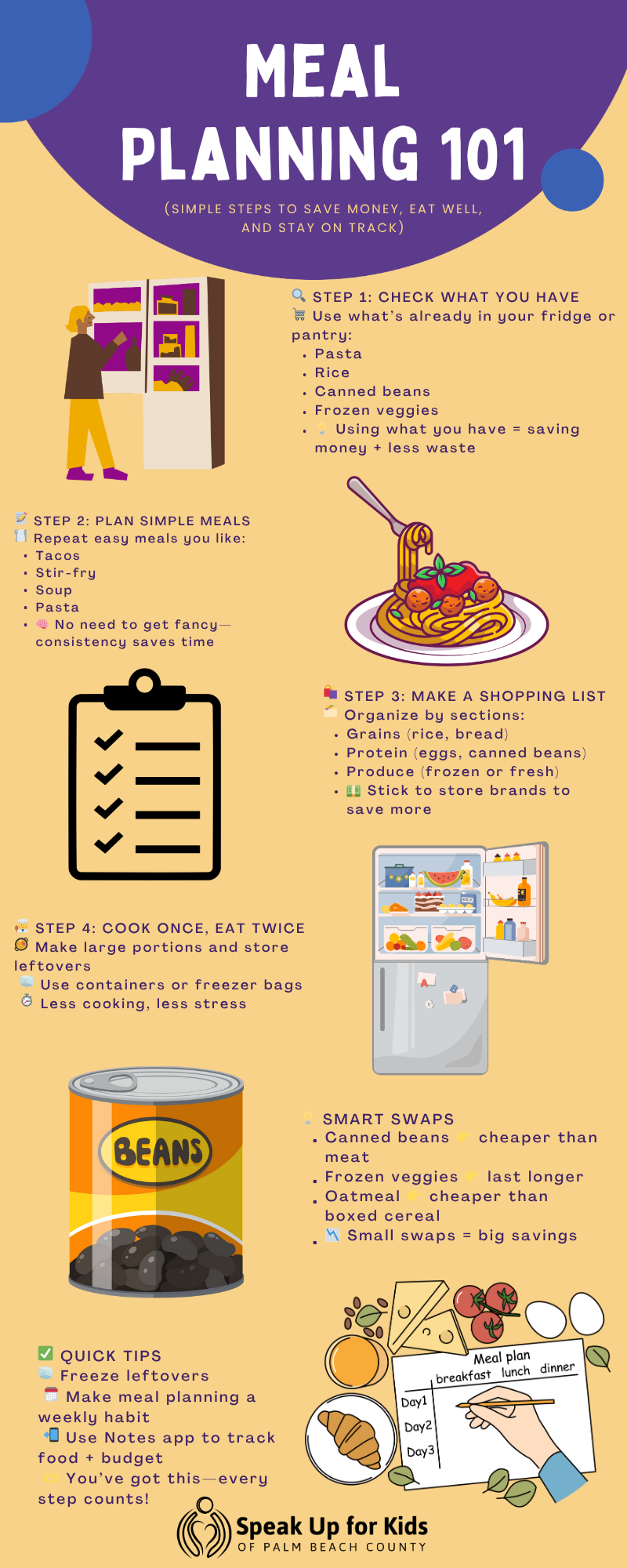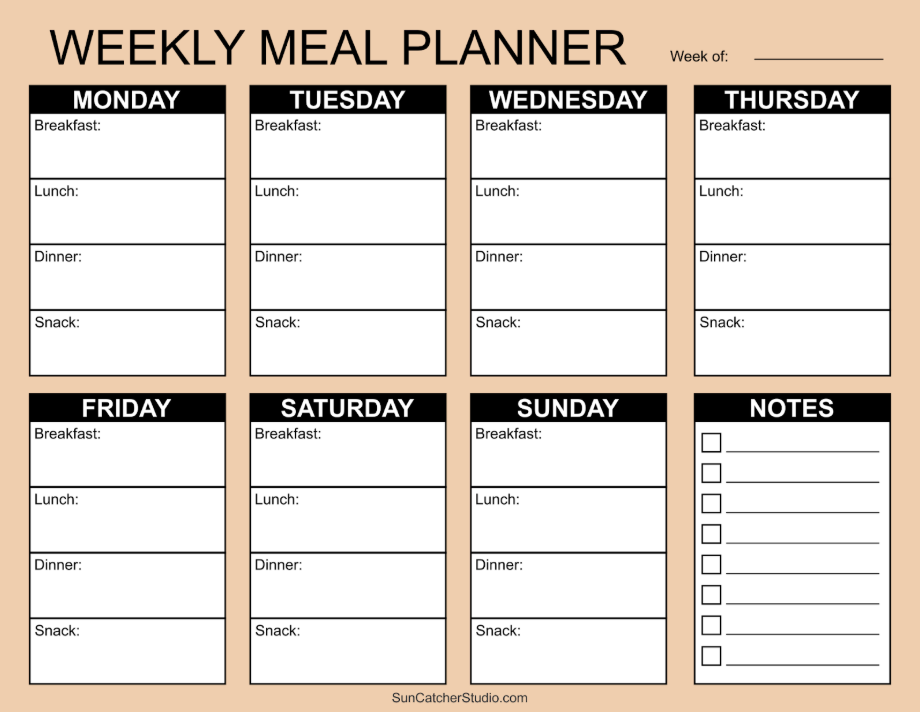Smart Meal Planning: Save Money and Eat Better
Contributed by Srikha Manubolu — Speak Up for Kids Student Intern and rising senior at Rock Ridge High School, passionate about mental health awareness and tutoring in underserved communities. She enjoys baking, traveling, running, and spending time with friends.
Overview
Meal planning isn’t just for foodies—it’s one of the easiest ways to save money, reduce food waste, and build healthier habits. Whether you’re cooking for one or managing a new routine on your own, having a simple plan makes life easier. Here’s how to get started.
1. Pick Your Time Frame
Decide whether you want to plan meals for the week or every two weeks. Start by checking your calendar—how many meals will you realistically need? Factor in work, school, evenings out, or nights when you might grab food with a friend.
2. Inventory First
Before heading to the store, take a few minutes to see what you already have in your fridge, freezer, and pantry. Use those items as a base. For example, if you’ve got rice and canned beans, you’re halfway to a burrito bowl. This helps avoid food waste and saves you from buying things you don’t need.
3. Build a Simple Weekly Template
You don’t need to come up with something new every night. Keep it easy with a template you can reuse week after week. For example:
Monday/Thursday: Chicken and veggies
Tuesday/Friday: Pasta or grain bowls
Wednesday: Tacos or stir-fry
Saturday/Sunday: Leftovers or budget-friendly soups
Repeating meals gives structure and cuts decision fatigue.
4. Write a Smart Shopping List
Once your meals are planned, write your shopping list—organized by store sections like produce, grains, proteins, and frozen foods. Only buy what you’ll actually use. For example, if you only need one pound of chicken for the week, don’t buy five. Stick to the list to avoid impulse purchases.
5. Cook Once, Eat Twice
Batch cooking is a time-saver. Make larger portions of grains, roasted vegetables, or proteins so you can reuse them in different meals. Leftover chicken? Turn it into a wrap or add it to soup. Cooked rice? Use it for stir-fry or burrito bowls. Prep once, eat for days.
6. Use Budget-Friendly Swaps
Small swaps can make a big difference:
Beans instead of meat for protein-packed meals
Frozen veggies instead of fresh—they last longer and cost less
Store-brand items over name-brand for the same quality at a lower price
These substitutions keep your meals affordable without sacrificing nutrition.
7. Track and Adjust
After your first week, take note of what worked and what didn’t. Did you buy too much? Run out of food too early? Adjust your portions, shopping list, and meal complexity until it feels natural. Planning gets easier every week with a little practice.
Consider using a meal planner like this to help keep track of your daily eating schedule!
Final Thoughts
Meal planning might feel overwhelming at first, but with a little practice, it becomes second nature—and the benefits are worth it. You’ll save money, reduce stress, and avoid the daily “what’s for dinner?” struggle. The key is to start simple, be flexible, and build a routine that works for you. Remember, progress is better than perfection—so even if things don’t go exactly as planned, you’re still building healthy habits one meal at a time. You’ve got this!



